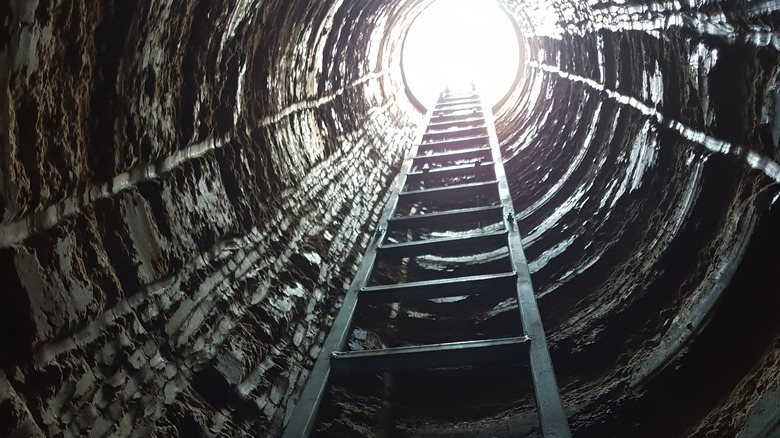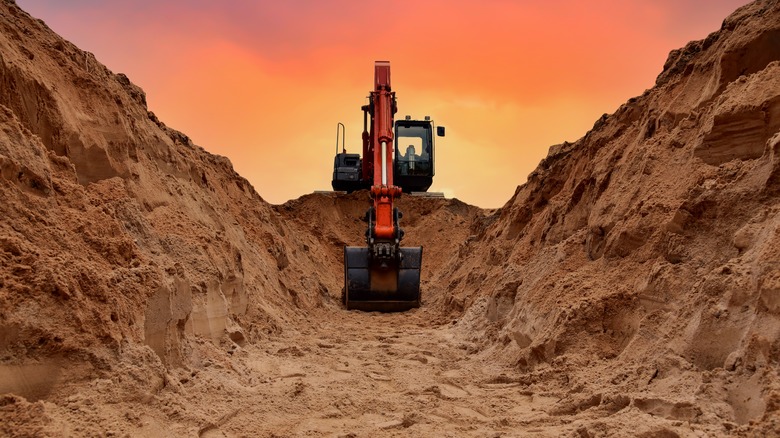This Innovative New Technology Turns Abandoned Mines Into Sustainable Energy Storage
Scientists seem to be proposing that throwing literal tons of sand down abandoned mineshafts can be utilized as a battery, which sounds ridiculous, but is actually feasible. Recently published in the peer-reviewed journal Energies, researchers laid out the plans for what they call "Underground Gravity Energy Storage" (UGES), and it's as intriguing as it is shockingly simple.
UGES takes two separate and unrelated problems and combines them in a unique way to solve them both. The first problem is that the world is littered with abandoned mineshafts: According to the Bureau of Land Management, there are abandoned mines in every state in the U.S. — totaling as many as half a million — with many of their locations unknown to this day. These locations are seriously dangerous, causing a fatality about every two weeks on average (per Bureau of Land Management).
The second problem UGES addresses is that the transition to sustainable energy generation from solar and wind power is going to require a huge amount of battery capacity. These energy sources are intermittent, meaning they might not be available at the exact time that the power is needed. Most people only need to turn their lights on after the sun sets, right? So, what exactly is UGES, and how can it solve these disparate problems at the same time?
Gravity is the new battery
How UGES works comes down to gravitational "potential" energy, according to Energies. The simplified physics of the proposed UGES plan is that when an object is up high, it has "potential energy," because it has the potential to unleash a lot of energy when it falls. If you then actually let the object fall, the potential energy turns into "actual" energy in the form of kinetic motion.
With other renewable energy sources like solar or wind power working during the day, there's usually more energy generated than actually needed to power cities. The goal with UGES is to store the excess energy, which is where sand-filled mineshafts come in: the excess energy would be used to lift sand out of the mines. Once the sand is topside, it would wait with potential energy stored up and ready for future use. When energy demands later exceed the supply, the sand can be dropped back into the mine, generating power using regenerative braking technology. Then the cycle repeats as necessary (per Energies).
Traditional batteries are tough to recycle and are prone to slowly losing their battery charge over time, which is not only wasteful, but a real problem for renewable power generation. But a pile of sand sitting beside a mineshaft holds its potential energy forever. With researchers estimating UGES could store 579 GWh of energy in the U.S. alone, this is probably the greenest use an old coal mine could ever hope to see.

